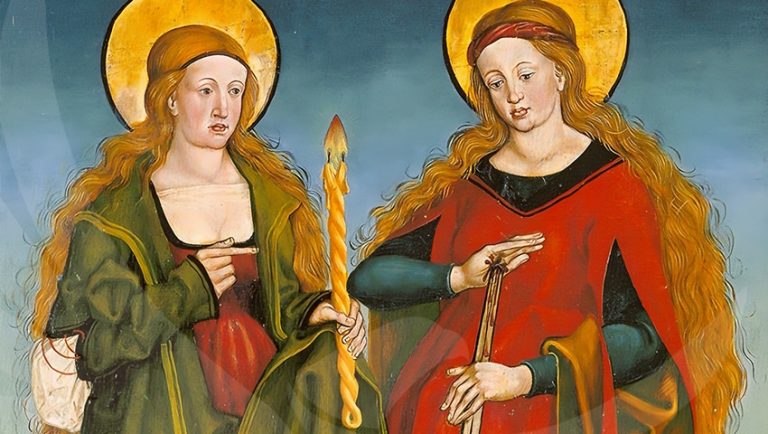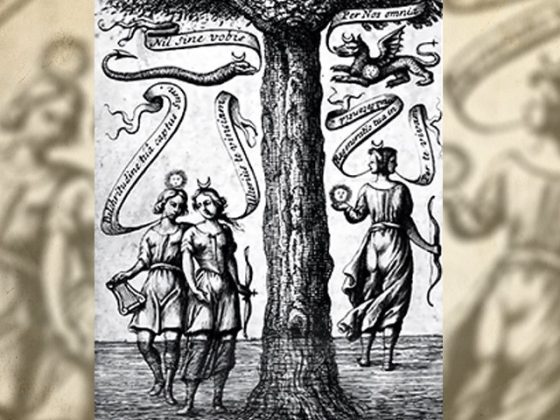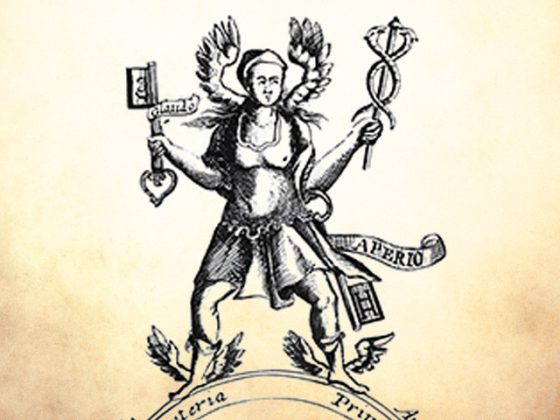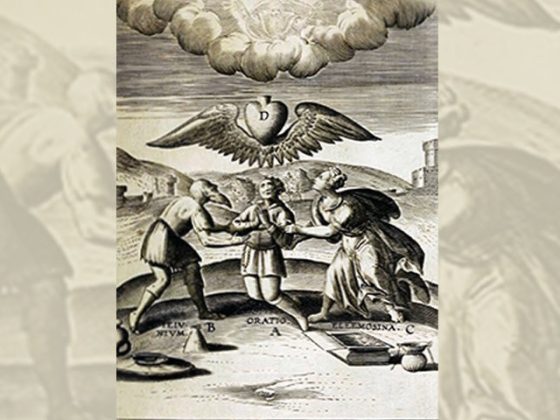Dear reader friends:
It is with immense pleasure that I am writing to you to send you these engravings that I hasten to comment. The first of them is entitled…
…TOLERANTIA IN ADVERSIS ADFERT NOTIONEM DEI
─'Tolerance in adversity produces knowledge of God'─
These engravings belong to a series of 14 drawings called Jacob's Ladder or The Allegory of the Road to Eternal Bliss, printed by Dirck Volckertszoon in 1550. The engravings bear the signature of the Dutch painter Maarten Van Heemskerck as their creator.
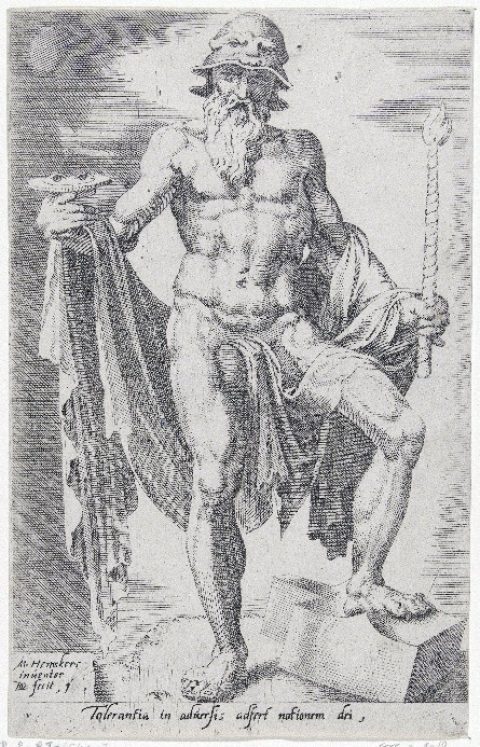
The character who personifies tolerance has one leg on an anvil, an attribute of patience. In his left hand he carries the torch of knowledge and in his right a plate with two eyes.
A detail that attracts our attention because of the similarity of symbolism is that, from the 14th century, one of the attributes with which Saint Lucy began to be represented ─the one who carries the light, a Christian martyr, (283-304)─ was a plate with two eyes. One of the medieval legends said that the proconsul Pascasius “ordered his soldiers to gouge out the eyes of Lucy, but after they did so, God granted her new eyes even more beautiful than those she had before.” It is very likely that both the painter and the engraver were familiar with this iconography of Saint Lucy. As they surely knew of the iconography of another martyr, represented holding a candle in her hand, Saint Geneviève (420-502), patron saint of the city of Paris due to her great faith, influence and contribution to the defense of the city against the invasion of the Huns in the year 450 and then against the invasion of the Franks.
When we try to delve into what this extraordinary engraving represents, we realize that the central character wears on his head a kind of helmet in which human eyes stand out. This representation alludes to the fact that, in order to become patient and tolerant, we need to be very conscious, very alert and accompanied by the strength that is indicated by the anvil on which the old man rests his left foot. The anvil resists all blows without suffering the slightest damage, so the soul, strengthened by inner work, resists the onslaught of daily life, staying firm on the path.
The torch that the character carries in his left hand allegorizes the light of Consciousness, because without it we are blind to the adversities of our existence. This is reaffirmed by the plate with two eyes that this old man carries in his right hand. We need the vision of the Consciousness to understand and comprehend the adversities of our transit through the carousel of existence. All of this reinforces in us the powers of the Creator, who is able to restore our vision even when we are subjected to human cruelty.
The muscular anchorite of our engraving offers us, therefore, three indispensable things to succeed in the Hermetic journey: eyes representative of Consciousness, an anvil alluding to strength and a torch indicating wisdom…..
The other engraving, below, tells us in Latin:
Spes roboratur patientia. Translation: ‘Hope is strengthened by patience.'
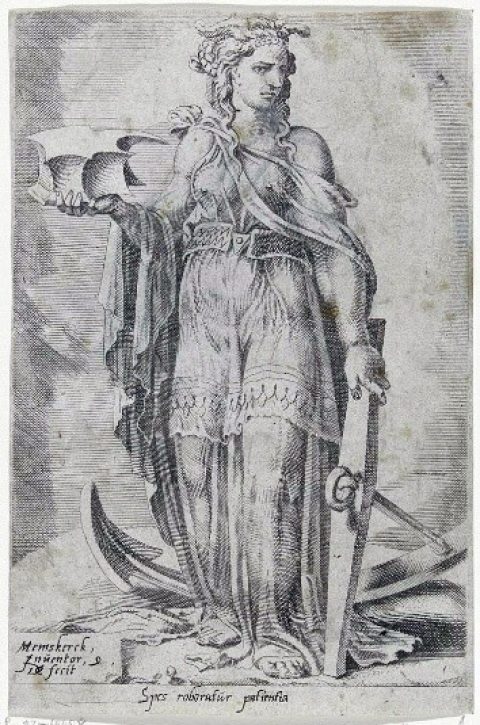
The personification of hope has an anvil in her right hand as a symbol of patience and an anchor by her side. It is good to make it clear to our readers that the anchor was used in medieval times and during the Renaissance by Masonic brotherhoods to represent the Three Primary Forces of Creation: the Father, the Son and the Holy Spirit; in other words, it was a symbol of liberation.
Patience and tolerance ─the ability to endure adversity─ are synonymous. This definition is interesting to us:
Synonyms of patience: fortitude, endurance resignation.
Patience is, by derivation, a virtue of suffering, but it is also an active virtue, like patience in industriousness, application, and teaching.
Passively, it is serene, self-controlled, without yielding ground or complaining; actively, it adds to this spirit, as appropriate to the situation, a constant, vigilant, and untiring industriousness and fidelity. Fortitude is the passive kind of patience, accompanied by remarkable courage. In endurance, attention is focused on the fact of enduring work, pain, contumely, etc. Resignation implies the voluntary submission of the will to a personal cause of affliction or loss; it is a lofty word, which generally regards God as the controller of human life. Therefore, resignation is generally a submission or meekness, renouncing or resigning one's desires to the will of God.
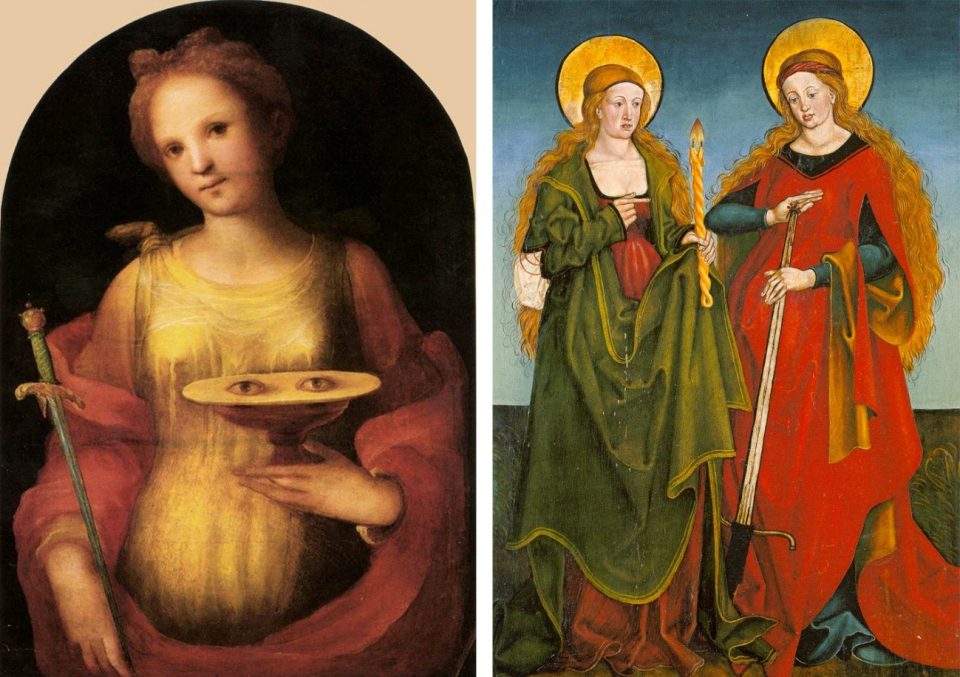
On the left, we see Saint Lucy ─painting by Domenico Beccafumi (1486-1551)─. On the right, Saint Geneviève with the torch and Saint Lucy with the sword.
These paintings indicate that both martyrs worked with the Sacred Fires and therefore have the right to be depicted with swords.
I give you some sentences that are very propitious to be reflected upon:
“Faith begins as an experiment and ends as an experience.”
William Ralph Inge
“Faith consists in accepting the affirmations of the soul, and the absence of faith in denying them.”
Emerson
“The man of faith is eternal in his hope.”
Lucas Fernández de Ayala
“Faith is the continuation of reason.”
William Adams
“He who trusts never tires.”
Quevedo
PACTA SUNT SERVANDA.
─'The pacts must be fulfilled'─.
KWEN KHAN KHU


